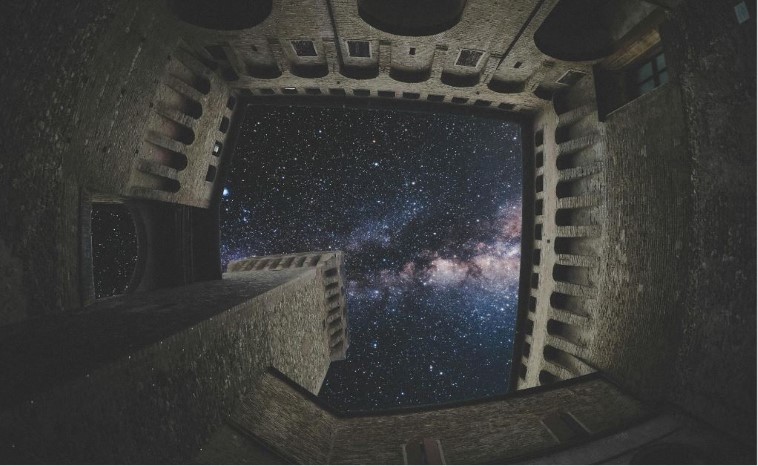The radius of the universe that is all around us

With the development of technology, astronomers have recently finally been able to see the most distant objects that can be seen at all. These are ancient galaxies that have been sending us their light since the beginning of time.
But as we all by know, light has a certain speed and so, by looking into the distance, we are paradoxically looking into the past. We see the Sun as it was 8.5 minutes ago, because that’s how long it takes for the light ray to reach us.
We see the large Andromeda galaxy today as it looked 2.5 million years ago, because that’s how much light from that galaxy traveled to us. Measured by the speed of light, the Sun is 8.5 light minutes away from us, and the Andromeda galaxy is 2.5 million light years away.
And how far did the light, from the farthest object that we can see, travel to us?
Well, scientists have calculated that this light traveled for 13.8 billion years – because that’s how old the universe is.
But let’s be careful here for a moment because that object we are observing is NOT 13.8 billion light years away anymore but much more. How is that possible?
As you may have concluded already, it is possible because the universe is expanding, so that, the most distant object (whose light came towards us 13.8 billion years ago) has moved even further away from us in the meantime.
In those 13.8 billion years, it covered some distance and now it is, scientists calculate, 46 billion light years away. So, in whatever direction we look, we can see objects that are 46 billion light years away from us.

Those 46 billion years are the radius of the universe that we can see, and the diameter is therefore 92 billion light years. This is assuming that the universe has been expanding at a constant rate all along.
Therefore, all around us we see objects that are at most 46 billion light years away. From this one can easily draw the wrong conclusion that we are at the center of the universe. But we don’t know where the boundaries of the universe are because we only see a part of the total universe, i.e. the oldest light traveled to us – and it could travel at most as long as the universe is old, i.e. 13.8 billion years. However, the universe is much bigger.
According to some accounts, the universe could be 250 times larger than what we see, i.e. seven trillion (7×1012) light years. And this is so according to very moderate estimates, because it is quite possible that it is much, much larger. Even unimaginably bigger although even these seven trillion are hard to imagine.
Now, at this point we enter into difficult speculations, which are not easy to understand, and which are even more difficult to explain. How big the universe actually is, depends largely on its shape.
Scientists debate various possibilities: that the universe is closed like a sphere, boundless and negatively curved like a saddle, or that it is flat and boundless. And what it is depends on the relationship between the speed of expansion, the amount of matter and dark energy. In any case, there is a possibility that the universe is actually infinite. It theory, it will expand eternally in an infinitely large space.
Did you know that here at OSR you can name stars?

